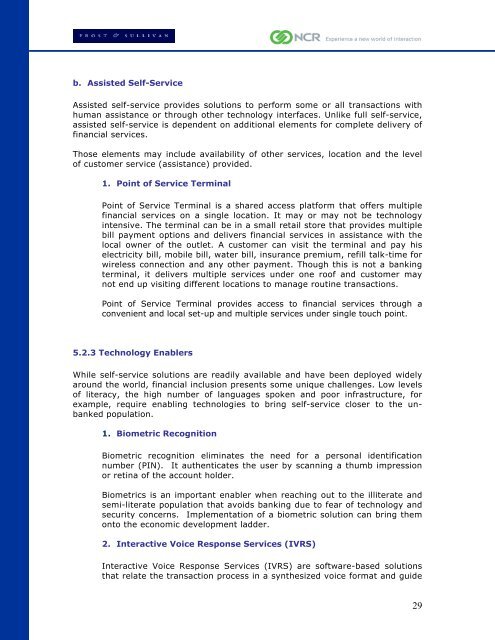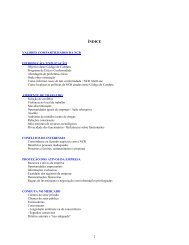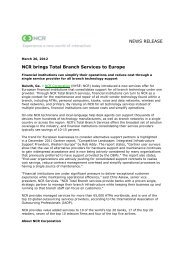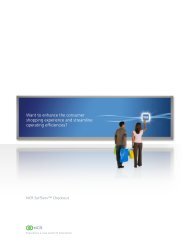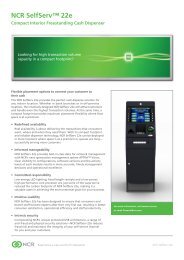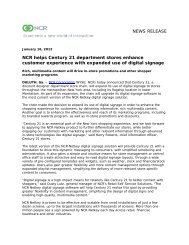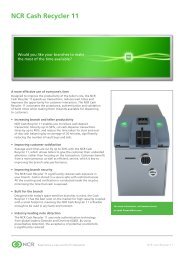Financial Inclusion White Paper - NCR
Financial Inclusion White Paper - NCR
Financial Inclusion White Paper - NCR
Create successful ePaper yourself
Turn your PDF publications into a flip-book with our unique Google optimized e-Paper software.
. Assisted Self-Service<br />
Assisted self-service provides solutions to perform some or all transactions with<br />
human assistance or through other technology interfaces. Unlike full self-service,<br />
assisted self-service is dependent on additional elements for complete delivery of<br />
financial services.<br />
Those elements may include availability of other services, location and the level<br />
of customer service (assistance) provided.<br />
1. Point of Service Terminal<br />
Point of Service Terminal is a shared access platform that offers multiple<br />
financial services on a single location. It may or may not be technology<br />
intensive. The terminal can be in a small retail store that provides multiple<br />
bill payment options and delivers financial services in assistance with the<br />
local owner of the outlet. A customer can visit the terminal and pay his<br />
electricity bill, mobile bill, water bill, insurance premium, refill talk-time for<br />
wireless connection and any other payment. Though this is not a banking<br />
terminal, it delivers multiple services under one roof and customer may<br />
not end up visiting different locations to manage routine transactions.<br />
Point of Service Terminal provides access to financial services through a<br />
convenient and local set-up and multiple services under single touch point.<br />
5.2.3 Technology Enablers<br />
While self-service solutions are readily available and have been deployed widely<br />
around the world, financial inclusion presents some unique challenges. Low levels<br />
of literacy, the high number of languages spoken and poor infrastructure, for<br />
example, require enabling technologies to bring self-service closer to the unbanked<br />
population.<br />
1. Biometric Recognition<br />
Biometric recognition eliminates the need for a personal identification<br />
number (PIN). It authenticates the user by scanning a thumb impression<br />
or retina of the account holder.<br />
Biometrics is an important enabler when reaching out to the illiterate and<br />
semi-literate population that avoids banking due to fear of technology and<br />
security concerns. Implementation of a biometric solution can bring them<br />
onto the economic development ladder.<br />
2. Interactive Voice Response Services (IVRS)<br />
Interactive Voice Response Services (IVRS) are software-based solutions<br />
that relate the transaction process in a synthesized voice format and guide<br />
29


